|
 |
|
 |
| |
| Elizabeth, from the
Hebrew Elisheva, means God's abundance.
But Elizabeth was childless. She and her
husband Zachariah were well on in years and may have
given up on having a family. |
| |
| One day when
Zachariah was on duty in the Temple, standing by the
great altar holding a cup full of burning coals and
incense, the angel Gabriel suddenly appeared.
Zachariah was startled and frightened. (I
always wonder what Gabriel looked like because his
first words are always, "Don't be afraid!") |
| |
| The angel patted his
shoulder, reassured him and pronounced the amazing
news to Zechariah that his wife Elizabeth was to
give birth to a son. Zechariah's first
reaction was disbelief and a demand for proof.
Gabriel then formally introduced himself and left
Zechariah mute in punishment for his initial doubt. |
| |
| Elizabeth did indeed
become pregnant and anxiously awaited the birth.
Meanwhile, Zechariah remained mute, so it's not as
if they could share their expectations and
excitement. It may have been a lonely
pregnancy, at least until Cousin Mary appeared
on the scene. |
| |
|
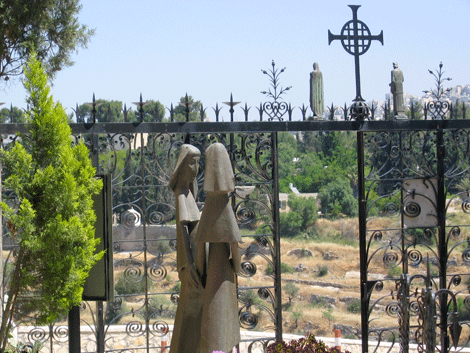 |
|
Photo: Gila
Yudkin |
|
Meeting of Elizabeth and Mary,
remembered at
the Visitation Church |
| |
| Mary, to whom
Gabriel also appeared, lived in the Galilean village
of Nazareth about ninety miles north of the hill
country of Judea, home to Elizabeth and Zachariah.
A pregnant Mary traveled by foot, or by donkey,
along a land of hills and valleys studded with many,
many rocks to come visit her cousin Elizabeth.
Imagine those conversations! |
| |
|
 |
|
Copyright 2014 by
Gila Yudkin |
|
Map locating Elizabeth's home in
the "Hill Country of Judea" |
| |
| Elizabeth's hometown in the "hill country of
Judea" is traditionally identified as Ein Karem, a
village on the western outskirts of Jerusalem. Ein Karem means "spring of the vineyards," alluding to
the many terraces cultivated with grape vines as
well as fig, olive, pomegranate and almond trees. |
| |
|
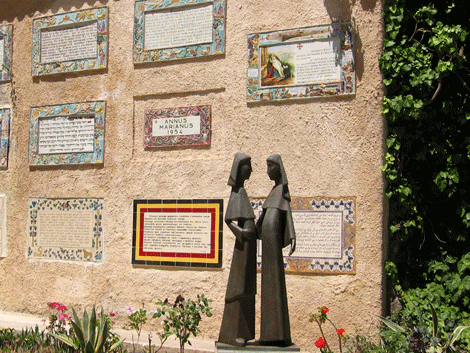 |
|
Photo: Gila
Yudkin |
|
Courtyard of the Visitation Church |
| |
| The Visitation Church in Ein Karem commemorates
Mary's visit with pregnant cousin Elizabeth. Don't
miss the two great statues of the pregnant women. At
the foot of the church is a cave believed to have
hidden the infant John as King Herod's soldiers
searched for infants under the age of two after
being told of Jesus' birth. |
| |
|
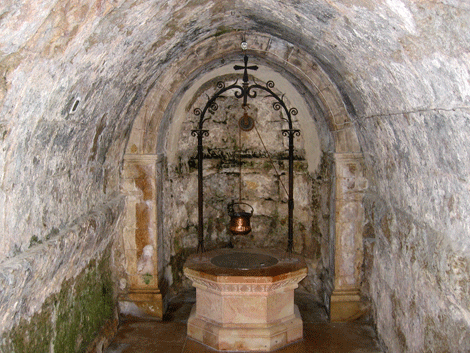 |
|
Photo: Gila
Yudkin |
|
Grotto below the Church of the
Visitation |
| |
| Also in Ein Karem is the Church of St. John the
Baptist, reputed to be built over the site of the
home of Elizabeth and Zachariah. The most venerated
part of the church is the grotto where it's said
John was born. Here we remember the next part of
Elizabeth's story: I can imagine it well because we
have the same custom in Judaism today. |
| |
| The boy is publicly named for the first time on the
eighth day during the circumcision ceremony. All the
relatives are gathered, probably whispering among
themselves, waiting curiously for the boy to be
named. Then there's a silence as Elizabeth declares,
"His name will be John." And the relatives say,
'What?? He should be named Zachariah after his
father! No way. No one in your family is named
John." |
| |
| Then the crowd turned from Elizabeth to her husband
and he signaled that a writing tablet be brought to
him. And he wrote, 'His name is John."
Then Zechariah
began to speak. |
| |
|
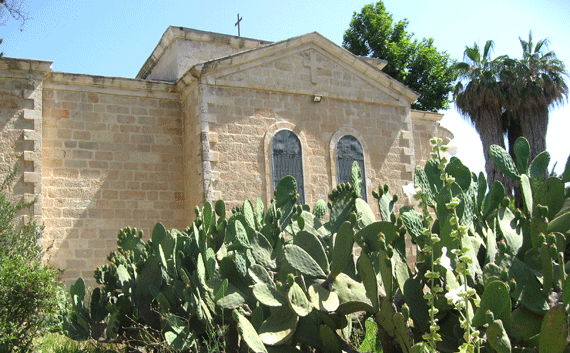 |
|
Photo: Gila
Yudkin |
|
Ein Karem's Greek Orthodox Church of St John |
| |
| Ein Karem is, or
was, considered to be a "traditional" site, without
much confidence that there was even a village here
in the days of Elizabeth and Zachariah. However, on
July 1, 2015 the Israel Antiquities Authority
startled everyone by announcing that a 2,000 year
old mikveh (that is a Jewish ritual bath) had been
discovered during renovations of a house lining the
main street in the center of Ein Karem. |
| |
|
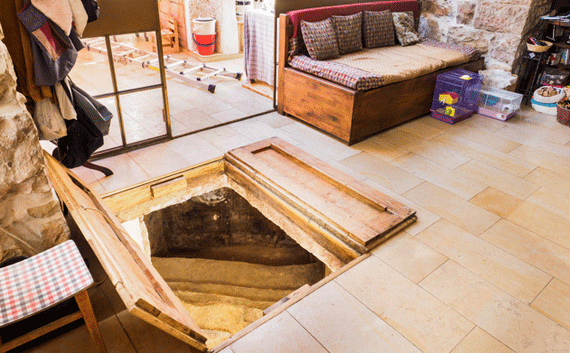 |
|
Courtesy of Israel
Antiquities Authority |
|
2,000 year-old ritual bath found
under modern living room in Ein Karem |
| |
| This is the most significant evidence to date that,
indeed, a Jewish village existed here west of
Jerusalem "in the hill country of Judea"
contemporary to Zachariah and Elizabeth, and -- John
the Baptist. |
| |
|
The house is, in fact, a stone's throw from the
Catholic church of St. John the Baptist. We walk
from the church through an arched stone alleyway
bordered by swinging green grapes (still sour in
July!) suspended from meandering vines and come
to the main drag. Across the street we face the
wooden door of the house where the mikveh was found.
Who would have guessed?? |
|
|
|
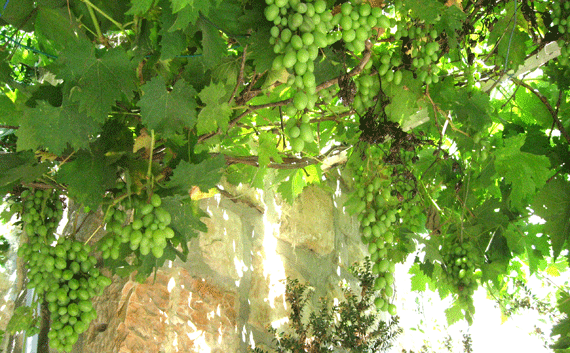 |
|
Photo: Gila
Yudkin |
|
Wandering through an Ein Karem
alleyway in July |
| |
| The mikveh is considered relatively large, at 3.5
meters long, 2.4 meters wide and 1.8 meters deep. It
is carved in stone and dug according to Jewish
ritual laws. A stone staircase carved out of bedrock
leads to the bottom of the immersion pool. Second
Temple period pottery and pieces of stone tools were
found on the floor of the mikveh. |
|
|
|
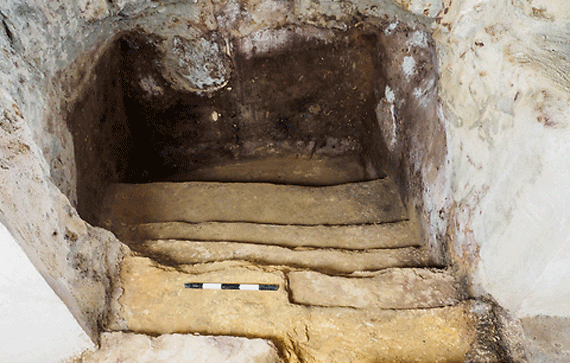 |
|
Courtesy of Israel
Antiquities Authority |
|
2,000 year-old Jewish mikveh
found under modern home in Ein Karem |
| |
| When you next come to the Holy Land, try to make
time to visit Ein Karem, a rustic neighborhood
nestled in the hills of western Jerusalem. It's an evocative (and
perhaps even the authentic) place to remember Elizabeth,
Zachariah and John the Baptist. |
| |
|
Copyright 2015 Gila Yudkin. Permission
needed for any reuse. |
| |
| Other Holy Land
Heroines posted to date include, in biblical /
chronological order, the
Witch of En Dor, bathing beauty queen
Bathsheba,
Abishag
the Shunemite,
Pharaoh's daughter,
Mary
Magdalene,
Verona
and
Princess Alice. |
| |

